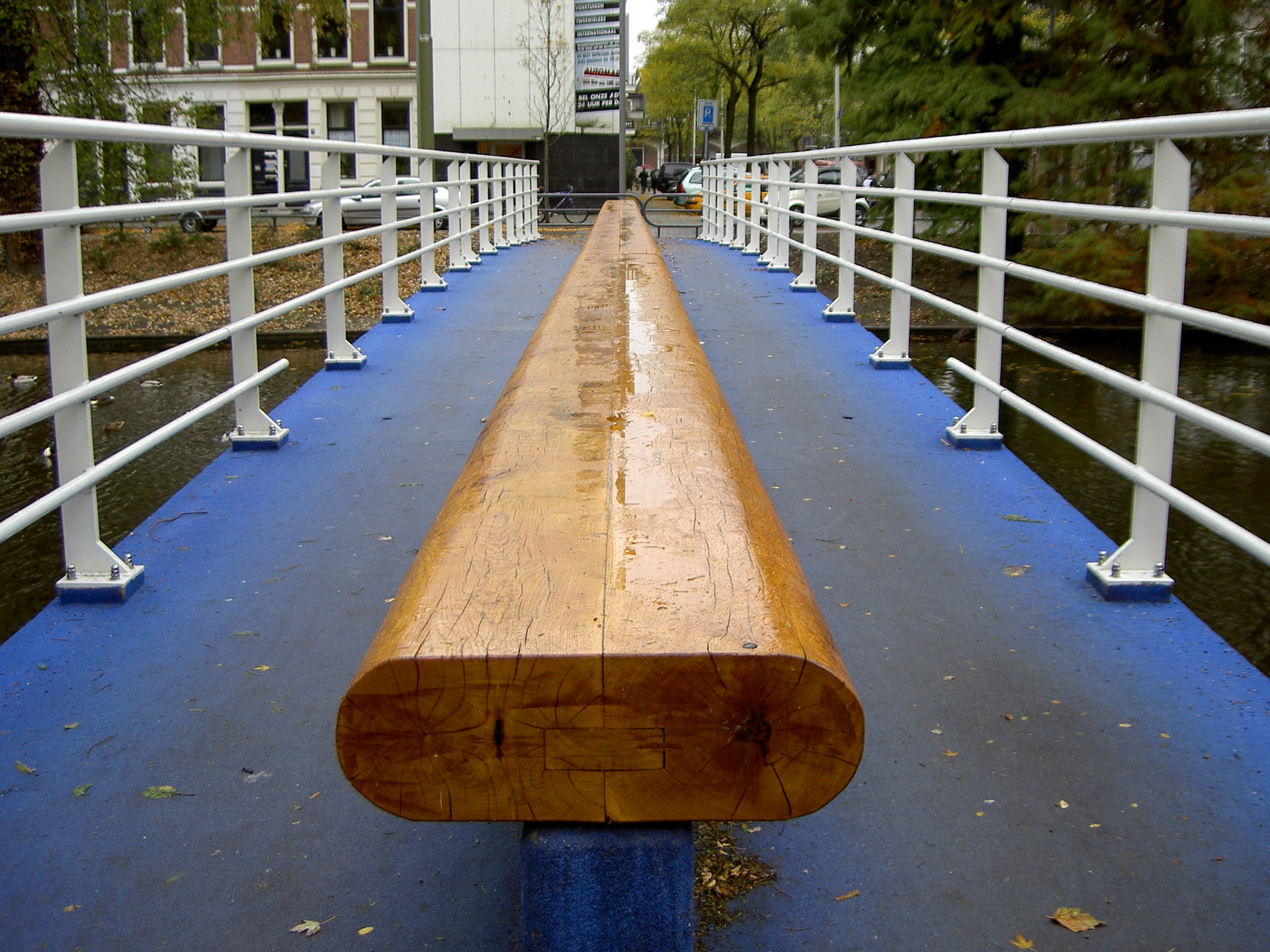
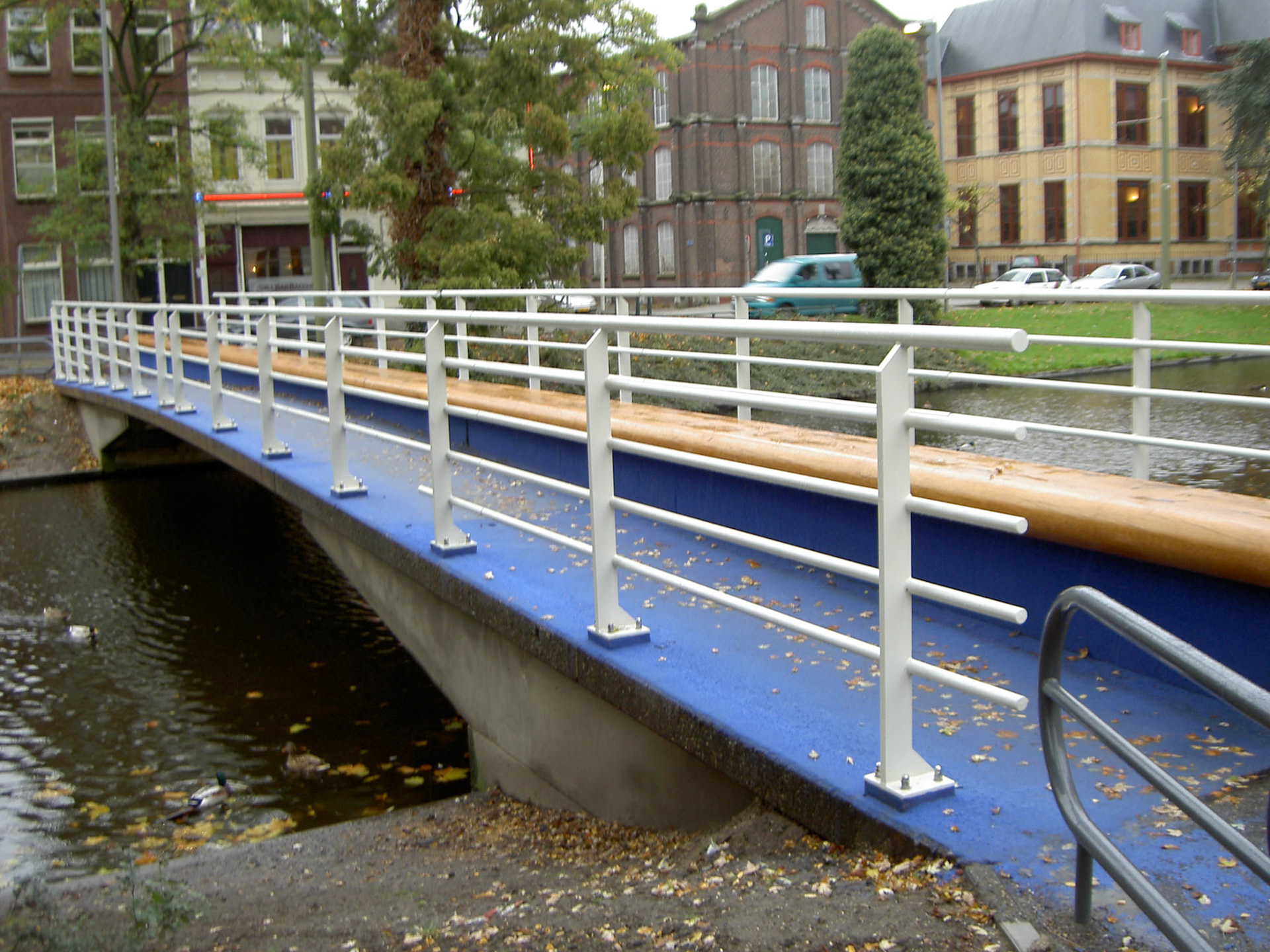
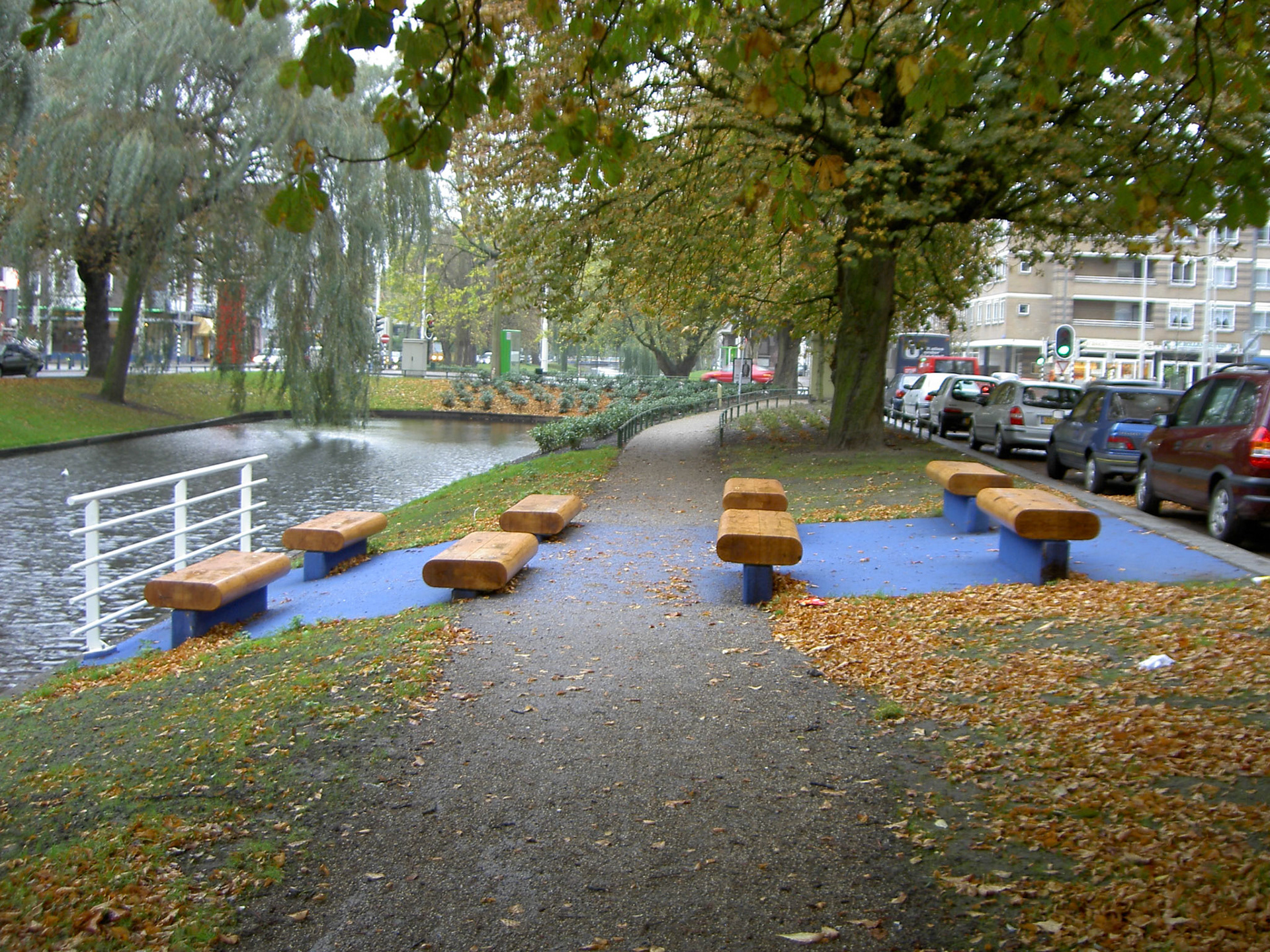

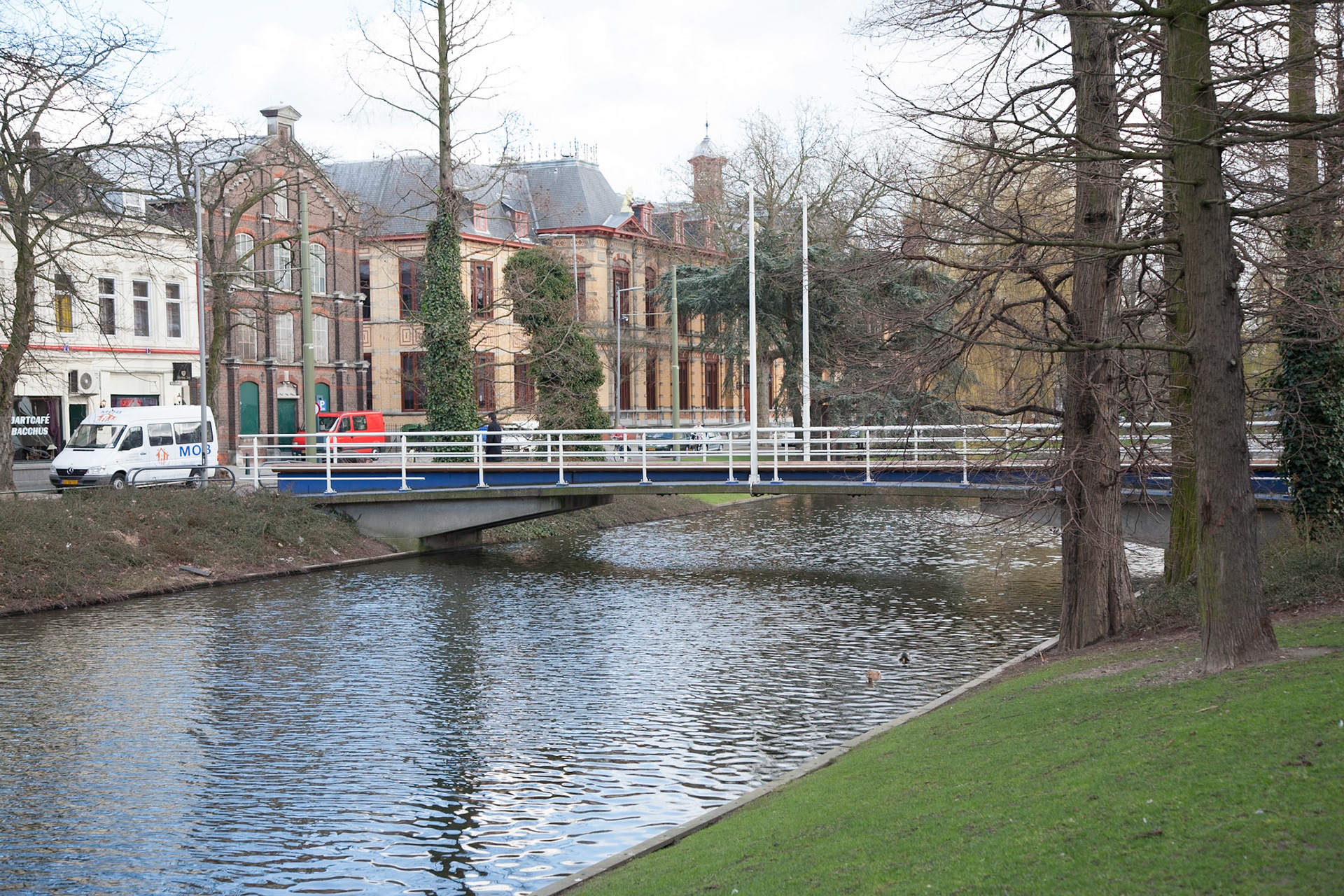
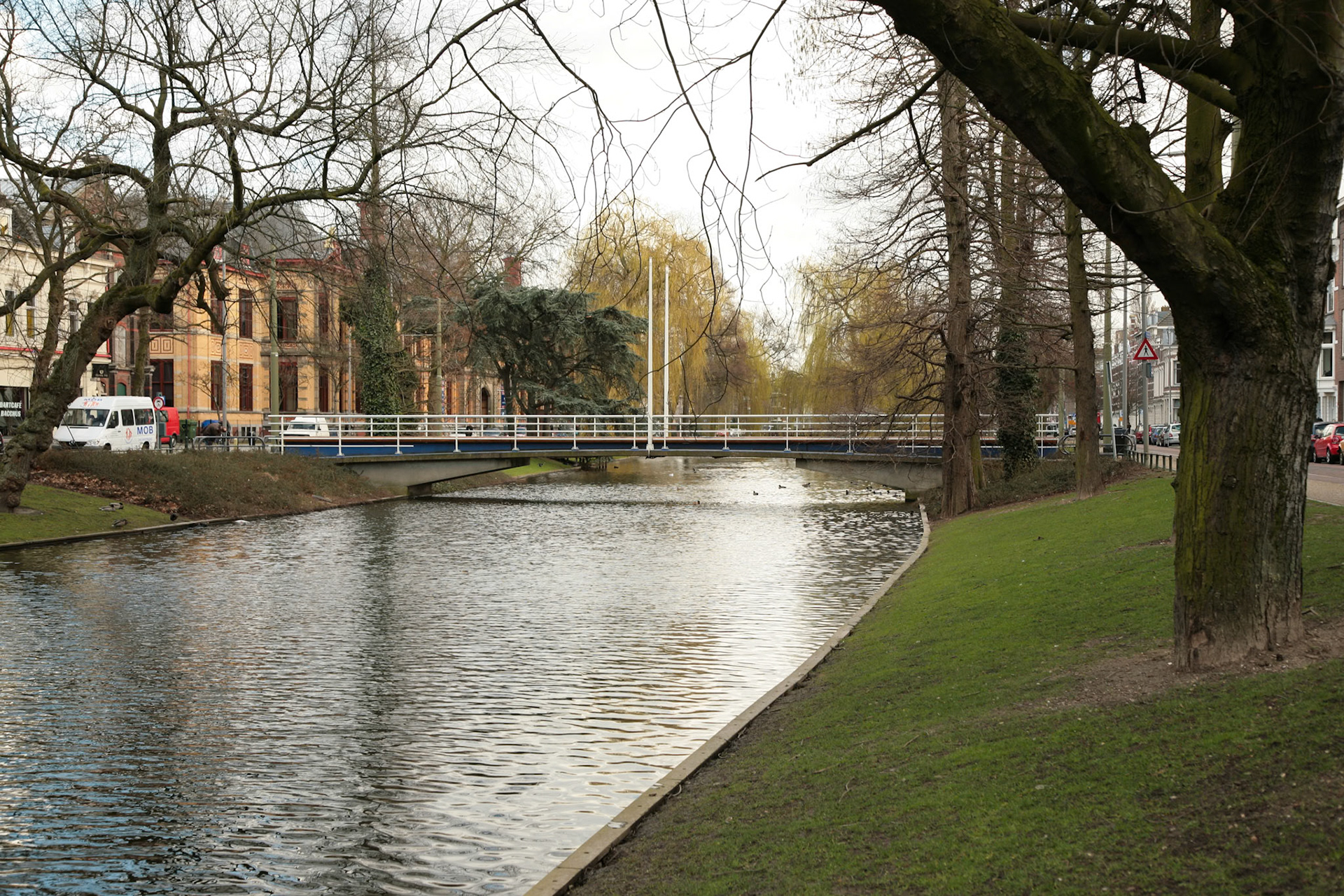
Commissioned by the city of Rotterdam (nl)
Arguably, the design of public space is simply the task of staging experiences. Jeroen Doorenweerd has practiced this reading quite often in his work, but few projects are as explicit as the work he realized for the City of Rotterdam at the Bergsingel and the Bergstraat Bridge. When dealing with the notion of a stage it is of course important to determine who the actors and audience are. The strength of this work is that the boundary between these two is made irrelevant. At the waterside Doorenweerd designed eight benches and placed them on a square blue base. The contrast that the design brings about makes sure that at the very least all of the passers-by are aware of this tribune, and ultimately choose to make use of it by sitting down. Once seated – because of the slope of the bank of the canal – they are automatically positioned to view what’s happen-ing on the other side of the water, thereby making it the stage on which public life can be observed. Audience and actors are determined. Or are they? At the same time the audience (highlighted by the strong blue sur-face) is placed on a stage and observed, both from the front and from behind. As a continuation of this game of watching and being watched, Doorenweerd also designed the bridge that connects the two sides of the canal. By constructing a bench in the middle and over the entire length of the bridge – using the same blue surface to entice use of the bridge and bench – the play with audience and actor is the same as that along the canal, and no less apparent. But the experience of the bridge is not limited to this participation. The bridge itself is curved, while Doorenweerd’s bench is not, which results in a great discrepancy in height and ultimately experience, depending on the size of the seated user. Even when no-one sits on the bench, the bridge acts as a stage due to the blue surface and the way in which the bench separates passers-by in two walking directions. When walking past one another on either side, the question remains: Who is watching whom? (Huib Haye van der Werf)